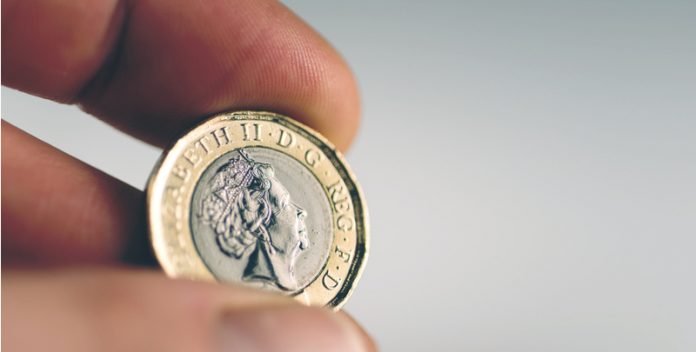Following the disastrous election results on Friday for the UK Conservative party, the pound remains under pressure as we enter into the new week amid concerns over UK Prime Minister Theresa May’s authority in 10 Downing.
Despite the leader of the UK conservative party, Theresa May, winning the election with 318 seats, the UK Conservatives still lost their working majority in Parliament. A coalition agreement has since been thrashed out with Northern Ireland’s Democratic Unionist Party (DUP). Over the weekend there have been several calls for Theresa May to resign, but as we head into the new week it would appear that the UK Conservative party is behind May – at least for the time being. Any of the main candidates to replace May would apparently make the Conservative party less popular.
The pound U.S. dollar exchange rate tumbled to $1.2650 on Friday on pound weakness. This is the lowest level for the exchange rate since Theresa May called the snap election in mid-April. The pound then strengthened marginally to $1.2730 on news that the Conservatives were forming a coalition with the DUP. The pound U.S. dollar is lingering around this level early on Monday.
| What do these figures mean? |
|---|
| When measuring the value of a pair of currencies, one set equals 1 unit and the other shows the current equivalent. As the market moves, the amount will vary from minute to minute. |
| For example, it could be written: 1 GBP = 1.28934 USD |
| Here, £1 is equivalent to approximately $1.29. This specifically measures the pound’s worth against the dollar. If the U.S. dollar amount increases in this pairing, it’s positive for the pound. |
| Or, if you were looking at it the other way around: 1 USD = 0.77786 GBP |
| In this example, $1 is equivalent to approximately £0.78. This measures the U.S. dollar’s worth versus the British pound. If the sterling number gets larger, it’s good news for the dollar. |
As investors continue to digest the implications of a hung parliament, the pound could drop further. The increased political uncertainty that has come about as a result of Friday’s result is expected to keep the pound under pressure, especially in the near future.
However, there may be a silver lining for sterling.
There is a possibility that UK political uncertainty could actually result in a softer and more palatable Brexit. Given Theresa May’s loss of power, she is unlikely to be able to charge ahead with the “hard” Brexit she had so expressly wanted. Therefore, we could see the pound rising as Theresa May heads into the Brexit negotiations – as a weakened leader with a weaker mandate could mean a softer Brexit.
| Why is a “Soft” Brexit better for sterling than a “hard” Brexit? |
|---|
| A soft Brexit implies anything less than UK’s complete withdrawal from the EU. For example, it could mean the UK retains some form of membership to the European Union single market in exchange for some free movement of people, i.e immigration. This is considered more positive than a “hard” Brexit, which is a full severance from the EU. The reason “soft” is considered more pound friendly is because the economic impact would be lower. If there is less negative impact on the economy, foreign investors will continue to invest in the UK. As investment requires local currency, this increased demand for the pound then boosts its value. |
Federal Reserve rate hike almost certain
The week ahead promises to be a busy one for the dollar. Politics took centre stage last week as fired U.S. FBI Director, James Comey, spoke to Congress regarding Trump and the circumstances behind Comey’s dismissal. The dollar sighed a breath of relief as no new major information was brought to the table. The buck then rallied following Comey’s speech.
This week the emphasis is firmly on the U.S. central bank hosting the Federal Open Market Committee meeting on June 13th and 14th. It will release its interest rate decision on Wednesday, with analysts expecting an increase of 0.25%. Even though the market has put a 95.8% probability of interest rates being hiked, the dollar could still see a small boost from the event
| Why do raised interest rates boost a currency’s value? |
|---|
| Interest rates are key to understanding exchange rate movements. Those who have large sums of money to invest want the highest return on their investments. Higher interest rate environments tend to offer higher yields. So, if the interest rate or at least the interest rate expectation of a country is relatively higher compared to another, then it attracts more foreign capital investment. Large corporations and investors need local currency to invest. So more local currency used then boosts the demand of that currency, pushing its value higher. |
This publication is provided for general information purposes only and is not intended to cover every aspect of the topics with which it deals. It is not intended to amount to advice on which you should rely. You must obtain professional or specialist advice before taking, or refraining from, any action on the basis of the content in this publication. The information in this publication does not constitute legal, tax or other professional advice from TransferWise Inc., Currency Live or its affiliates. Prior results do not guarantee a similar outcome. We make no representations, warranties or guarantees, whether express or implied, that the content in the publication is accurate, complete or up to date. Consult our risk warning page for more details.
This article was initially published on TransferWise.com from the same author. The content at Currency Live is the sole opinion of the authors and in no way reflects the views of TransferWise Inc.





